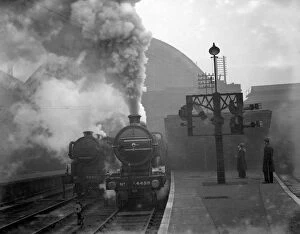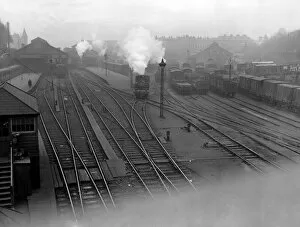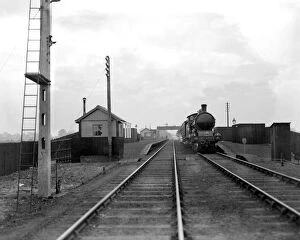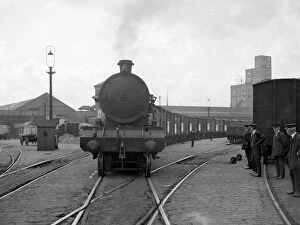Railway Lines Collection (#2)
Railway lines, like the veins of a nation's transportation system, weave their way across landscapes, connecting cities and towns with an intricate network
For sale as Licensed Images
Choose your image, Select your licence and Download the media
Railway lines, like the veins of a nation's transportation system, weave their way across landscapes, connecting cities and towns with an intricate network, and are more than just tracks; they represent progress, unity, and the power to move people and goods from one place to another. In Cyril Herbert's captivating photograph, we see a bird's-eye view of railway tracks stretching into the distance. The graphic composition highlights the precision and engineering marvel behind these iron arteries that crisscross our world. The Ghan to Alice in 1978 takes us on a journey through time as we imagine the excitement and anticipation of passengers boarding this iconic train. It reminds us that railways have always been vessels for adventure and discovery. From Mangamaunu near Kaikoura in Marlborough to Motherwell's Craigneuk Steel Works in 1949, railway lines shape landscapes both rural and industrial. They cut through mountainsides, traverse vast plains, bringing lifeblood to communities along their route. Maps showcasing French Railway Lines or European Railway Lines reveal how interconnected countries are by rail. These maps symbolize cooperation between nations while facilitating trade, tourism, and cultural exchange. In London's Southwark district stands The Shard towering over railway lines leading into London Bridge station—a modern-day testament to architectural brilliance harmonizing with transport infrastructure. Looking back at history brings forth images like Jack Delano's depiction of Bensenville freight yard in Illinois during World War II. This snapshot serves as a reminder of how vital railways were for supplying troops on distant battlefields. But not all moments captured are about war or grandeur; lithographs depicting "The March to Pretoria" or "Guerilla Warfare in South Africa" show brave individuals repairing railway lines severed by conflict—symbolizing resilience amidst adversity. Whether it is transporting commuters during rush hour or carrying raw materials for industries worldwide—the significance cannot be overstated. They connect people physically, economically, and emotionally, shaping the landscapes we inhabit.











